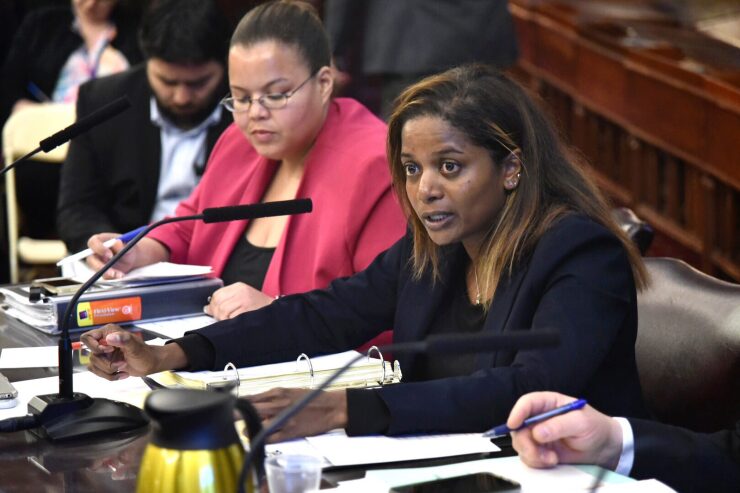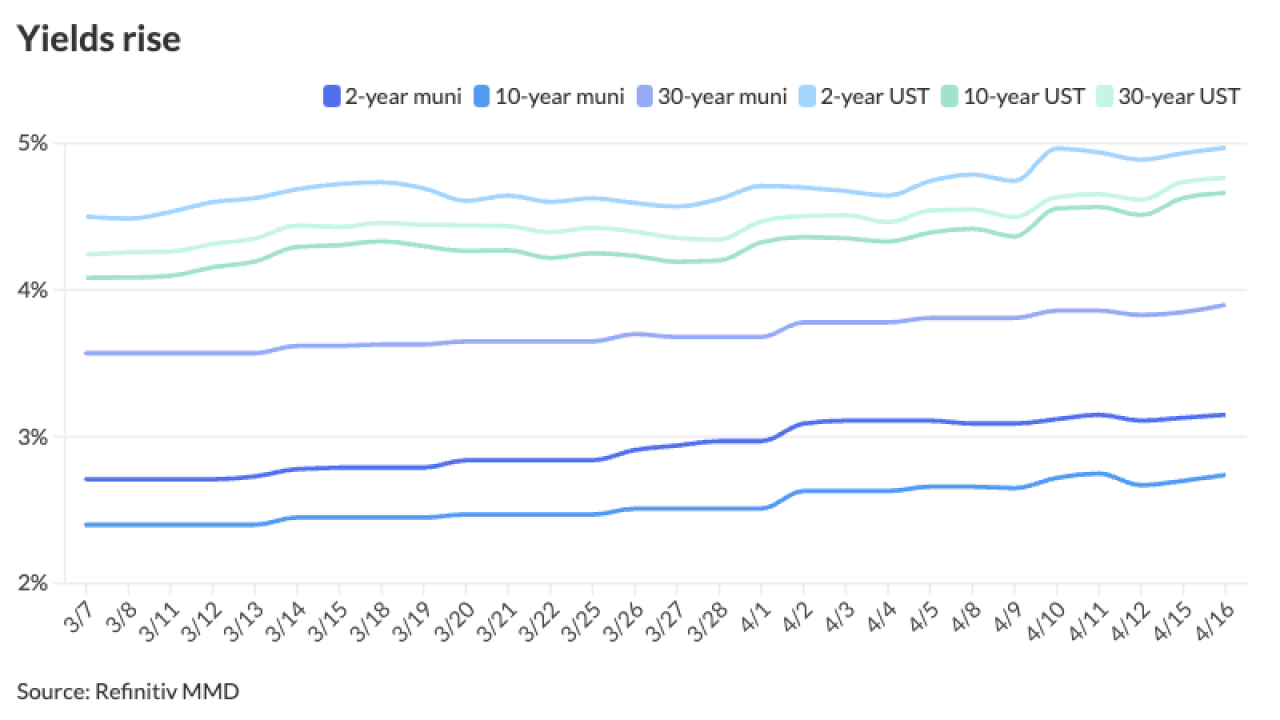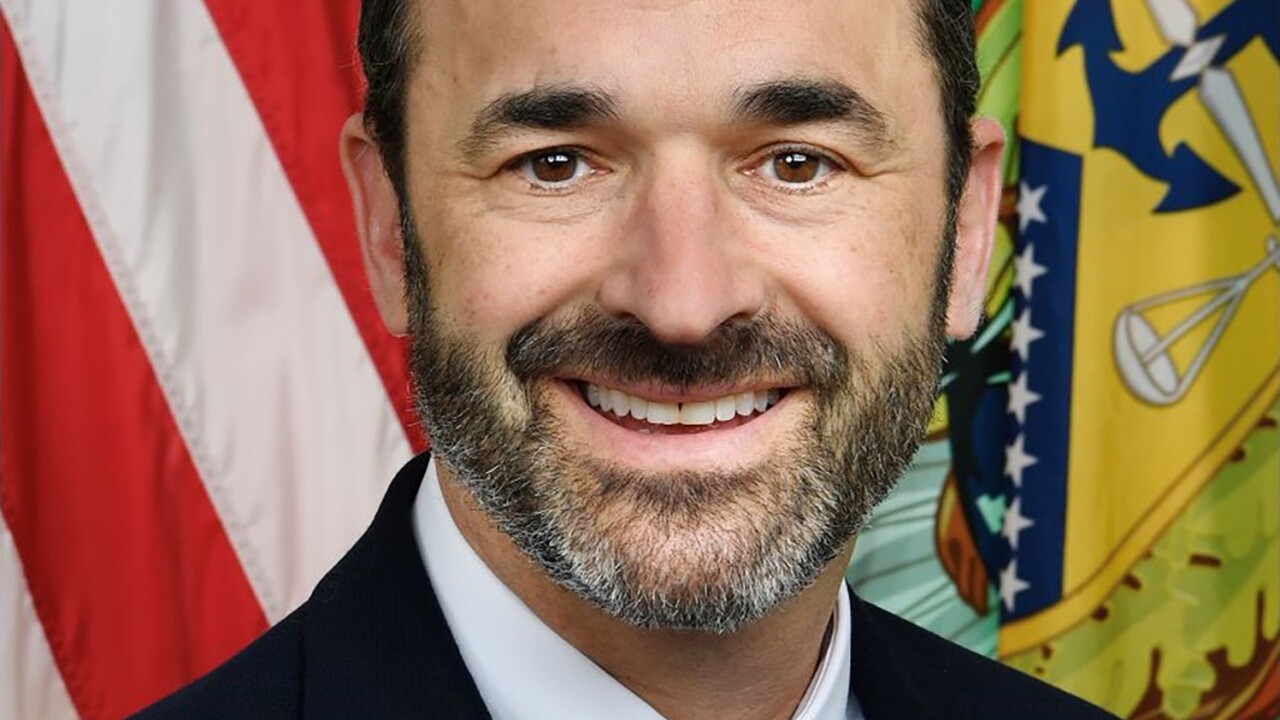“Strategic investments” account for the 20% increase in spending since New York Mayor Bill de Blasio took office, his budget director said Thursday.
“It’s important to point out where our spending is grown over the course of the administration,” Melanie Hartzog said at a breakfast meeting of the business group Association for a Better New York, at the Hilton Midtown.

Hartzog, in her first full year as budget director after a tenure as deputy, cited labor agreements de Blasio’s team had to secure when he took office in January 2014. The city, she said, has also earmarked necessary funding on education and capital infrastructure. “Those are the three major areas of growth,” she said.
De Blasio and the City Council in June approved an $89.2 budget for fiscal 2019. It was the city’s largest spending plan ever and marked a $4 billion increase from the previous year.
The budget included an additional $125 million to the $1 billion allocation in the general reserve and $100 million to the Retiree Health Benefits Trust Fund, raising the balance for the latter to $4.35 billion. The capital stabilization reserve has a $250 million balance. The capital stabilization reserve will remain at $250 million.
Prepaying on outyear budgets, said Hartzog, resonates well with rating agencies, who call the move an operating surplus.
“It’s not a bad thing to have,” said Hartzog. “Bond rating agencies actually point to it as one of the reasons why New York City has such a high credit rating on our bonds.”
Carol Kellermann, president of the watchdog Citizens Budget Commission, called on the city to deepen its reserve tank to buffer against the next downturn.
“If the projections of all the economists are right, things are going to be great through 2022. That’s 151 quarters of economic growth. It’s not going to last that much longer,” said Kellermann. “When we look at all the things going on in the world, something’s got to give.”
Latonia McKinney, director of the City Council’s finance division, called the budget process a balancing act.
“We have to talk about reserves but we have to prioritize things like Fair Fares that we need now,” she said.
Fair Fares is the city-funded discount program for lower-income subway and bus riders. The city has allocated $106 million for a half-year pilot program, to start in January.
The budget includes $420 million to repair New York City Housing Authority infrastructure. Additionally, under a consent decree with the federal government, the city will earmark $1 billion over four years to fix NYCHA units and $200 million in the remaining years.
Kellermann called for tapping the private sector to build new public housing.
“We should be more steward than we are landlord,” Kellermann said. “That’s what most public housing authorities have done a long time ago.”
NYCHA's participation in federal repair programs lag that of many other cities, according to the watchdog
IBO studied two key programs: the Housing Opportunities for People Everywhere, or Hope VI program, which was funded from 1993 through 2010, and the Rental Assistance Demonstration program, launched in 2012.
"Participation in these programs can be controversial because they involve some degree of privatization and the potential for a loss of public housing through demolition or conversion," IBO said.
Nationally, New York ranked 21st for Hope VI funding awards, participating at a substantially lower rate than such housing authorities such as Atlanta ($207 million), Washington ($181 million), and Baltimore ($167 million).
Chicago leads under the Rental Assistance Demonstration program, with 10,300 units either completed or approved for conversion to private operation under long-term affordability contracts. El Paso ranks second, with nearly 6,000 units in the program, followed by Nashville with 5,500.
New York ranks seven among housing authorities, with 3,100 units participating in RAD. Given the scope of the consent decree, it could seek to move more developments into the program.





